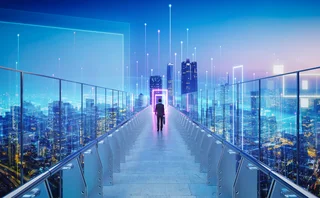Moscow Exchange Launches Efficiency Program

The measures seek to limit the amount of extraneous orders sent to the exchange, at a limit of 20 per ruble paid in commission. The program is similar to other such moves by US exchanges that have recently met with mixed success. Nasdaq OMX, for instance, operates a messaging efficiency program where traders are penalized for sending large amounts of orders that don't result in trades. Direct Edge also launched a similar initiative, but retired it recently without explanation.
Moscow Exchange was quick to hail the immediate success of its program, claiming that only ten high-frequency trading (HFT) participants exceeded the threshold. It says that adjustment of algorithms has resulted in a fivefold reduction of traffic on the securities market, and twofold on the FX market, while retaining order and trade volume sizes. The company estimates that around 40 percent of market share is taken by HFT participants on its stock market, with the strategy responsible for around 97 percent of orders, and positions itself as receptive to the practice. The exchange has highlighted the effectiveness of transaction charges on FORTS, Russia's derivatives market, as a way of reducing system load and protecting investors from technical incidents.
"Moscow Exchange operates a world-class state-of-the-art software and hardware complex with the capacity to process the volume of the orders exceeding the current peak values multiple times", says Vahan Vardanian, managing IT director at Moscow Exchange. "The terms of applying the surcharge by the Moscow Exchange have been designed in order not to hamper the HFT trading development in any way. The new initiatives of the Exchange together with encouragement of the trading members will contribute to the Russian financial market development and the market turnover growth."
HFT has experienced a backlash in recent years from more traditional stock brokers who see it as a method of gaming the market and hampering real investment, and from certain elements of the sell side, which are concerned about its effect on large-scale block orders. It is facing oversight from both US and EU regulators, while a number of initiatives in both equities and FX have been launched to limit its effectiveness.
The company estimates that around 40 percent of market share is taken by HFT participants on its stock market, with the strategy responsible for around 97 percent of orders.
Only users who have a paid subscription or are part of a corporate subscription are able to print or copy content.
To access these options, along with all other subscription benefits, please contact info@waterstechnology.com or view our subscription options here: https://subscriptions.waterstechnology.com/subscribe
You are currently unable to print this content. Please contact info@waterstechnology.com to find out more.
You are currently unable to copy this content. Please contact info@waterstechnology.com to find out more.
Copyright Infopro Digital Limited. All rights reserved.
As outlined in our terms and conditions, https://www.infopro-digital.com/terms-and-conditions/subscriptions/ (point 2.4), printing is limited to a single copy.
If you would like to purchase additional rights please email info@waterstechnology.com
Copyright Infopro Digital Limited. All rights reserved.
You may share this content using our article tools. As outlined in our terms and conditions, https://www.infopro-digital.com/terms-and-conditions/subscriptions/ (clause 2.4), an Authorised User may only make one copy of the materials for their own personal use. You must also comply with the restrictions in clause 2.5.
If you would like to purchase additional rights please email info@waterstechnology.com
More on Trading Tech
Editor’s Picks: Our best from 2025
Anthony Malakian picks out 10 stories from the past 12 months that set the stage for the new year.
The next phase of AI in capital markets: from generative to agentic
A look at some of the more interesting projects involving advanced forms of AI from the past year.
Will overnight trading in equity markets expand next year? It’s complicated.
The potential for expanded overnight trading in US equity markets sparked debate this year, whether people liked it or not.
WatersTechnology latest edition
Check out our latest edition, plus more than 13 years of our best content.
The total portfolio approach gains momentum: Building the right tech foundation for success
The rationale for the TPA, and the crucial role technology plays in enabling such an approach
Google, CME say they’ve proved cloud can support HFT—now what?
After demonstrating in September that ultra-low-latency trading can be facilitated in the cloud, the exchange and tech giant are hoping to see barriers to entry come down.
Institutional priorities in multi-asset investing
Private markets, broader exposures and the race for integration
BlackRock and AccessFintech partner, LSEG collabs with OpenAI, Apex launches Pisces service, and more
The Waters Cooler: CJC launches MDC service, Centreon secures Sixth Street investment, UK bond CT update, and more in this week’s news roundup.







